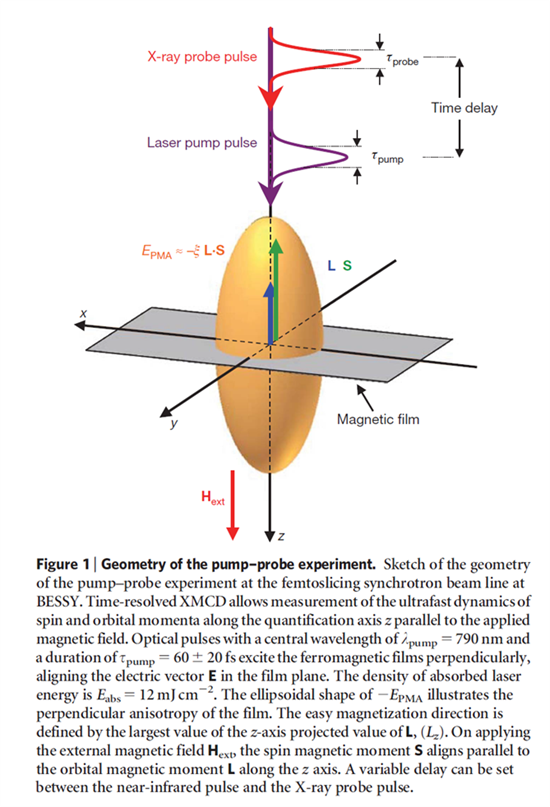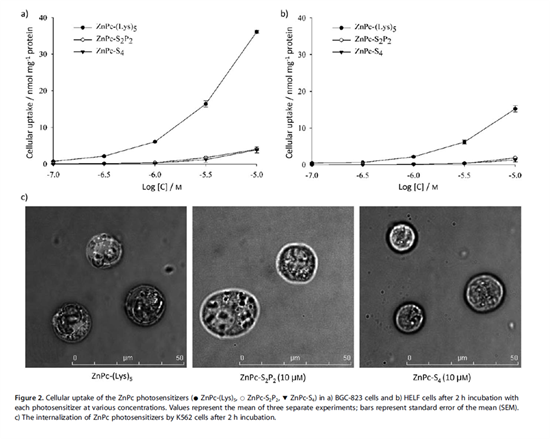By James Van Howe
This post originally appeared on Jim’s Cleo Blog and is reproduced with permission from its author.
As we await decisions on contributed papers in the next couple of weeks and for the technical program to be scheduled, the list of tutorials and invited talks for CLEO 2011 is rounding out. Two provoking titles that recently caught my eye were tutorial talks “Femtomagnetism” to be given by Jean-Yves Bigot from CNRS in Strasbourg, France under CLEO: QELS Fundamental Science 4: Optical Interactions with Condensed Matter and Ultrafast Phenomena as well as “Therapeutic Applications of Light: Photodynamic Therapy, the Killer and Low Level Light Therapy, the Healer” to be given by Michael Hamblin from Massachusetts General Hospital, under CLEO: Applications & Technology 1: Biomedical.
 Schematic of pump-probe experiment to investigate femtosecond time-scale demagnetization on a magnetic film; from Bigot et al., Nature, 465, 458 (2010).
Schematic of pump-probe experiment to investigate femtosecond time-scale demagnetization on a magnetic film; from Bigot et al., Nature, 465, 458 (2010).
In a recent Nature article, Bigot et al. describe short time-scale, spin-orbit dynamics during femtosecond, laser-induced demagnetization. Using a femtosecond pump pulse to quickly demagnetize a ferromagnetic thin-film immersed in a magnetic field, Bigot and his collaborators extract information about the spin and orbital angular momentum as a function of time in a cross-correlation technique using x-ray pulses (See Fig.1). Spin and orbital angular momentum contributions during the process are measured by time-resolved x-ray magnetic circular dichroism (XMCD), a technique in which circularly polarized x-rays absorb in different proportions at different energies depending on the spin and orbital angular contributions of the material. This recent work investigates the magnetism dynamics in thin films whose magnetization is perpendicular to the plane of the film- a class of materials sought after for high-density data storage, and for which spin-orbit coupling plays a large role.
Professor Hamblin’s work on the other hand uses light in a very different way- to activate chemicals that can target and selectively kill harmful cells like infectious microbes or malignant cancer cells (photodynamic therapy), as well as to activate the production of intrinsic detoxifying chemicals within damaed cells to stimulate tissue healing (low level light therapy). In photodynamic therapy (PDT), photosensitizers are introduced into the body locally or topically and taken-up by the harmful cells. Illuminating the targeted cells with light excites the photosensitizers and produces reactive oxygen species harmful to the targeted cell.
-
-
 Plots showing enhanced cellular uptake of the photosensitizer ZnPc-(Lys) compared with other sensitizers, and corresponding images of cells; from Hamblin et al., ChemMedChem, 5, 890, (2010).
Plots showing enhanced cellular uptake of the photosensitizer ZnPc-(Lys) compared with other sensitizers, and corresponding images of cells; from Hamblin et al., ChemMedChem, 5, 890, (2010).
One of the aims of Hamblin’s group is to create more efficient photosensitizers- ones that are more readily taken up by targeted cells and that are more lethal. Hamblin recently synthesized a photosensitizer, Pentalysine Beta-Carbonylphthalocyanine Zinc (ZnPc-(Lys)), that showed better cellular up-take, better selectivity to targeted cells, and a 20 times increase in photo-toxicity. Figure 2. shows the increase in uptake compared to conventional sensitizers. For more information on killing and healing power of light, visit Professor Hamblin’s very accessible and informative web pages. Better yet, be sure to attend the tutorial on phototherapy… For the full original post, click here.
Posted: 24 February 2011 by
James Van Howe
| with 0 comments